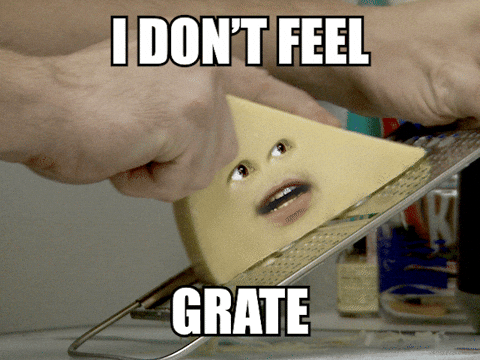Try It Out: Three Exercises to Quiet Perfectionism and Self-Doubt
Practical, hands-on strategies you can try right now.
Hello friends!
I pride myself on consistently sending out this newsletter every other Friday, but there was Something Going Around last week and I was under the weather, so thanks for your patience! Here is the newsletter, a few days late.
Reader Colin O. wrote in with a great idea: he asked for a consolidation of the Try It Out boxes from How to Be Enough, the summary exercises throughout the book that encourage you to try out—imagine that!—a concept in a concrete way.
So I gathered them all but discovered that, rather than a nice tidy garden, I had an overgrown, un-weeded lot of thirty-plus Try It Outs. Way too unwieldy for a newsletter.
Therefore, if you would like a consolidation of all the Try It Outs, reply to this email and I’ll send them to you.
In the meantime, here are my three favorites:
TRY IT OUT: What is the title of your self-criticism story? Practice picturing it in your mind’s eye, and then changing it: add animations, make each word a different color. Play with the sounds of the words: sing it, say it in the voice of Kermit the Frog or Morgan Freeman. The goal is not to make it go away. Instead, engage with it. Reflect on how this changes your relationship with the self-critical thought.
I love this one. It’s a technique officially called cognitive defusion and it helps us separate reality from our thoughts. Rather than changing the thought itself, we’re changing how we relate to the thought.
Those of us familiar with perfectionism are often highly conscientious. We take things seriously: our work, our commitments, our responsibilities. But that means we also take our own thoughts quite seriously, sometimes to a fault.
For example, a client we’ll call Niamh found an old photo of her boyfriend’s ex-girlfriend on his camera roll, and couldn’t help but notice that she was quite pretty. Niamh started to spiral: She’s prettier than me. I bet he thought she was more beautiful than me. I bet he still thinks about how beautiful she is. Niamh’s imagination took off at a full sprint from there, culminating in picturing the two of them in bed together. The image became her mental screensaver and not only made her want to tear her hair out, but also made her bewildered boyfriend wonder why Niamh was suddenly so mad all the time.
Rather than trying not to think about it, which worked about as well as telling a toddler not to scratch a mosquito bite, we played with the image. In her mind’s eye, Niamh put clown shoes on both of them. She added a soundtrack more appropriate to a jug band jamboree than an evening of romance. She did this not to be petty or mocking, but to emphasize that the movie in her mind was a thought. It wasn’t happening here and now. What was happening here and now was that her boyfriend wanted to connect with her—Niamh--but was mildly freaked out that she seemed to be fuming for an unknown reason.
Play with your alarming thoughts. Do you imagine your boss storming into your office and firing you? In your mind’s eye, throw a Civil War-era handlebar mustache and mutton chops on her. Again, this is not to devalue your boss—it’s to make the thought a little ridiculous so you can relate to it differently.
Or maybe your thoughts are words. If your brain likes to slap you with “I am a total loser,” sing it in a heavy metal growl, then switch and chant it like a cheerleader, complete with some clap-and-cleans.
The goal: take our thoughts less seriously and less literally by playing with them.
PS: Want another example? Check out comic Joe Wells as he illustrates this technique onstage.
TRY IT OUT: What self-judgments does your brain regularly dispense? Consider them a natural by-product of your genetics, upbringing, and/or life experience. What actions might you try, not to make them go away but as a work-around that moves you forward?
I use this one all the time. I come from a long line of perfectionistic people. My caveperson ancestors probably over-prepared for the mammoth hunt and over-thought how they came off at the cave party.
So when I get frustrated with myself because I’ve only gotten a quarter of my overly ambitious to-do list done by dinnertime, I remember this is just how I’m built. Knowing I come by my push-push-pushing honestly takes the moral judgment out of it. Strangely, acknowledging that I tend to expect too much of myself allows me to get some perspective and therefore stop expecting so much of myself.
3: TRY IT OUT: What is envy, shame, intimidation, or comparison telling you to do? Test out doing the exact opposite: get advice rather than bragging, wish others well rather than talking smack.
This totally worked with a client we’ll call Tim, who is the guitarist of a popular local band. Three weeks ago, during a show, one of his strings broke mid-set and he freaked out and stopped playing. The whole band derailed, ending the song mid-chorus. Tim was mortified and ashamed. “My professionalism was put to the test, and I failed,” he told me. “My bandmates will never look at me the same. They’ll always know I was responsible for this.”
Since that night, Tim said, he’s been morose and standoffish in rehearsals and subsequent shows. He still does his part, he assured me, but he doesn’t travel with the band anymore—he drives his own car, arrives right before they go onstage, and leaves right away. The shame drove a wedge between him and his bandmates, who are his closest friends and colleagues.
If we want an emotion to stick around, we should do what it says. But if we want an emotion to go away, we should do the opposite.
Shame tells us to hide, to isolate. Therefore, Tim’s homework was to do the exact opposite of what shame was telling him to do: shoot the breeze (Tim phrased it differently) with his bandmates. Hang out. Linger after the show.
Officially, this technique is called opposite action, but unofficially it’s just telling shame, envy, resentment, anxiety, or intimidation to get lost by metaphorically yelling “Opposite Day!” in its face.
Again, waiting for our feelings to change before we can act differently keeps us in limbo for a long time. Better to swap the order. Acting differently—leading with behavior—spurs our feelings to change much faster. This is not a one-and-done. For Tim, hanging out with his bandmates after the show was awkward at first, but shrink-rayed his shame down to a manageable size.
Last thing:
If How to Be Enough made you laugh, think, reflect (or procrastinate on something else), an *honest* review on Amazon will spark the same for someone else. Would you please take one minute to…
1️⃣ Go to the book’s Amazon page,
2️⃣ Click the blue text that says “[#] ratings” next to the stars
3️⃣ Click the “Write a customer review” button. It can be short: “Helpful!” “Loved it!” Or just stars—you don’t have to write anything at all.
4️⃣ Bask in my gratitude! 🙏😊🌟 Thanks for helping an author out!
Still need a copy? Hey, there’s an order button right here! ⬇️
Be kind to others and yourself









Thanks Ellen, super helpful and so inspiring!! I'm going to try out an Opposite Day today 😁 as I work on finishing a paper for my PhD which has stalled due to my perfectionism!!
Kia ora Ellen, would love your Try it out consolidation notes please! I’m halfway through HTBE and finding it so helpful. Thank you so much for your help, humour and generosity 💛